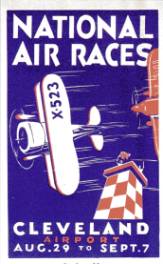
With proper training, airline pilots also may be deputized as federal law enforcement officers and be issued firearms to protect the cockpit. Pilots, such as helicopter pilots, who fly at low levels must constantly look for trees, bridges, power lines, transmission towers, and other obstacles.


Pilots who transport company executives, also known as corporate pilots, greet their passengers before embarking on the flight.Īgricultural pilots typically handle agricultural chemicals, such as pesticides, and may be involved in other agricultural practices in addition to flying. Some commercial pilots schedule flights, arrange for maintenance of the aircraft, and load luggage themselves. Commercial pilots may have additional nonflight duties. Technology has automated many of these tasks, and new aircraft do not require flight engineers.Ĭommercial pilots are involved in unscheduled flight activities, such as aerial application, charter flights, and aerial tours. Some older planes require a third pilot known as a flight engineer, who monitors instruments and operates controls. The copilot, often called the first officer or second in command, shares flight duties with the captain. The captain or pilot in command, usually the most experienced pilot, supervises all other crew members and has primary responsibility for the flight. The following are examples of types of pilots:Īirline pilots work primarily for airlines that transport passengers and cargo on a fixed schedule.
#Low time pilot jobs 2021 how to#
Some pilots are also instructors using simulators and dual-controlled aircraft to teach students how to fly. After landing, pilots fill out records that document their flight and the status of the aircraft. Once in the air, the captain may have the first officer, if present, fly the aircraft, but the captain remains responsible for the aircraft. They require close coordination among the pilot copilot flight engineer, if present air traffic controllers and ground personnel. Takeoff and landing can be the most demanding parts of a flight. They file flight plans with air traffic control and may modify the plans in flight because of changing weather conditions or other factors. Pilots plan their flights by checking that the aircraft is operable and safe, that the cargo has been loaded correctly, and that weather conditions are acceptable. Navigate the aircraft by using cockpit instruments and visual references.Respond to changing conditions, such as weather events and emergencies (for example, a mechanical malfunction).Monitor engines, fuel consumption, and other aircraft systems during flight.Operate and control aircraft along planned routes and during takeoffs and landings.Communicate with air traffic control over the aircraft’s radio system.Prepare and submit flight plans to air traffic control.Verify that the fuel supply is adequate and that weather conditions are acceptable.Ensure that the aircraft is balanced and below its weight limit.Check the overall condition of the aircraft before and after every flight.Learn more about airline and commercial pilots by visiting additional resources, including O*NET, a source on key characteristics of workers and occupations.Ĭommercial pilots are involved in activities such as firefighting and crop dusting.Īirline and commercial pilots fly and navigate airplanes, helicopters, and other aircraft. More Information, Including Links to O*NET Similar OccupationsĬompare the job duties, education, job growth, and pay of airline and commercial pilots with similar occupations. Many of those openings are expected to result from the need to replace workers who transfer to different occupations or exit the labor force, such as to retire.Įxplore resources for employment and wages by state and area for airline and commercial pilots. Overall employment of airline and commercial pilots is projected to grow 6 percent from 2021 to 2031, about as fast as the average for all occupations.Ībout 18,100 openings for airline and commercial pilots are projected each year, on average, over the decade. The median annual wage for commercial pilots was $99,640 in May 2021. The median annual wage for airline pilots, copilots, and flight engineers was $202,180 in May 2021.

Both also must meet Federal Aviation Administration (FAA) requirements. Commercial pilots typically need flight training. How to Become an Airline or Commercial PilotĪirline pilots typically need a bachelor’s degree and experience as a commercial or military pilot. Pilots usually have variable work schedules, with overnight layovers that are more common for airline pilots. Quick Facts: Airline and Commercial PilotsĪirline and commercial pilots fly and navigate airplanes, helicopters, and other aircraft.

Please enable javascript to play this video.


 0 kommentar(er)
0 kommentar(er)
